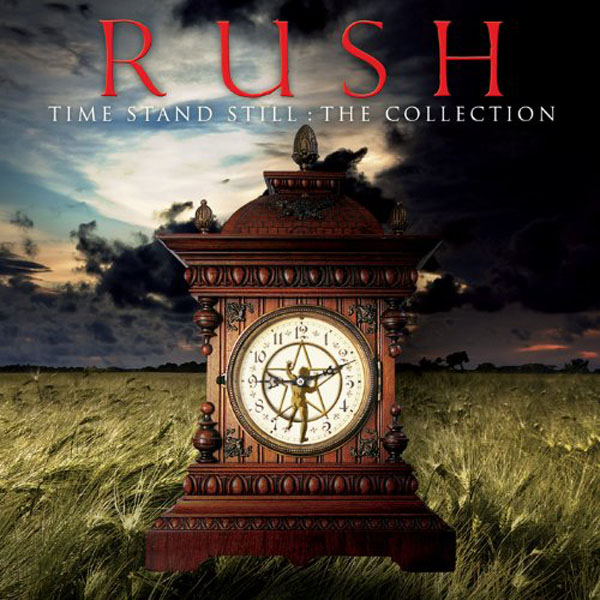
The Spirit Of Radio (4:57)
Tom Sawyer (4:37)
Freewill (5:23)
Fly By Night (3:21)
The Big Money (5:35)
Time Stand Still (5:10)
Limelight (4:22)
Finding My Way (5:06)
By-Tor And The Snowdog (8:37)
A Passage To Bangkok (3:34)
Distant Early Warning (5:59)
The Trees (4:41)
Closer To The Heart (2:54)
Time Stand Still: The Collection Linernotes
By Philip Wilding
The future looked bleak for the three men in the kimonos staring up from the sleeve of their fourth album. After their well-received eponymous debut and an award winning second album in Fly By Night they then released Caress Of Steel, which received the kind of response usually reserved for news that a meteor was to hit the earth. Their impending album disappeared from the release schedules, the tours got longer and the bills kept mounting up. In response, Rush announced that they were releasing a concept album about a dystopian future where artistic merit was oppressed and society would ultimately be set free by a young boy and his guitar, it was to be called 2112. As vocalist and bassist Geddy Lee would later recall: "If we were going to go down in flames then at least they were our flames."
For some fans, Rush were never really Rush until drummer Neil Peart returned to his native Canada from the UK where he'd been pursuing a career in music. Fate thwarted those plans and he'd come home to work in the family business. It was March 1974, Rush had released an album of the same name with drummer John Rutsey, by July Rutsey had been replaced by Peart, complementing Lee and guitarist Alex Lifeson in a line-up fans would come to refer to as 'definitive'. Peart, as well as having the playing chops to make people think there were four drummers on stage was also a keen lyricist. At first fantastical in theme, they'd later become allegorical and metaphorical, immersed in the human condition. Lee and Lifeson were delighted either way; they hated coming up with the words. Musically too, they went from being the band who Kiss' Gene Simmons tagged "Led Zeppelin Junior" to complex musical arrangers had later on arbiters of new technology and sounds.
Years of touring began to payoff, 2112 went gold at home, and while the band experimented stylistically sales soared and the rooms they played grew. They hit real commercial pay dirt with the less elaborate Permanent Waves album in 1979 and went stellar two years later with Moving Pictures. Most bands would have clung to the multi-platinum template of that album and cruised through the rest of their career, but Rush shied away from guitars with 1982's Signals, leaning heavily on Lee's adopted synthesizers to give the record its colour. They spent the 80s experimenting with musical light and shade, utilising both electronic and organic instruments (Lifeson now wryly admits that maybe they had too many toys to play with) and by the time they'd reached the 90s they were beginning to meter their album releases to manageable schedules, tours were shorter (though the shows were three hours long) and the band were finally able to carve out something akin to a home life.
Then in 1997, Peart lost his only daughter in a car accident, less than a year later his wife would die from cancer. Peart laid down his sticks and didn't pick them up again for almost five years. Lee released a solo album, Lifeson did some film work and then in 2002 the band reconvened and released the tougher, darker sounding Vapor Trails. It got them back to what they do best; playing live. Later they'd celebrate their dense history in all its guises with their R30 world tour before surprising their audience, and perhaps themselves, with one of the best albums of their career; 2007 's Snakes & Arrows. As I write, the band are back in the studio working on its follow up; 2011 promises a brand new Rush record and world tour. But for now enjoy a brief history of a band as they echoed through time. I still miss those kimonos though.
This Compilation ℗ 2010 Mercury Records Limited © 2010 Mercury Records Limited a Universal Music Group Company. All rights of the manufacturer and the owner of hte work produced reserved. Unauthorzied copying, hiring, lending, public performance and broadcasting of this recording is prohibited. Made in the EU. 00600753253458
Notes
- Universal/Mercury, March 23, 2010
- After five North American compilations and one European reissue (The Essential Collection) covering Rush's first 12 studio albums from their Mercury years (1974-1987), this is the first such compilation released by Universal exclusively in Europe.